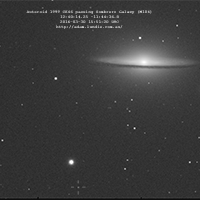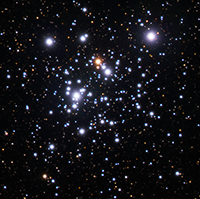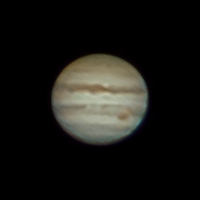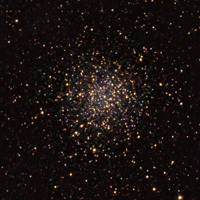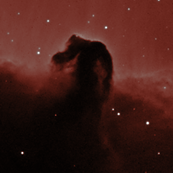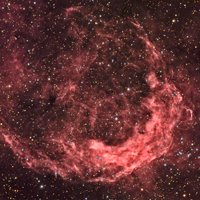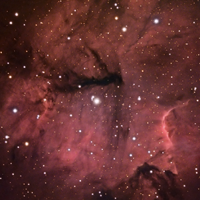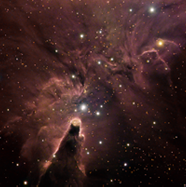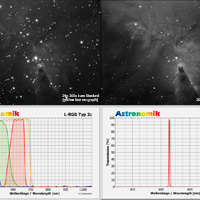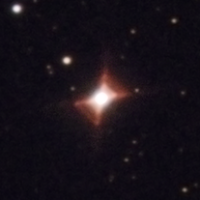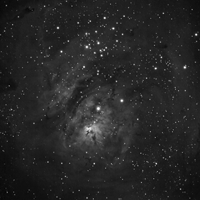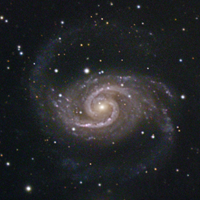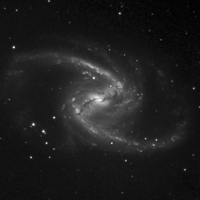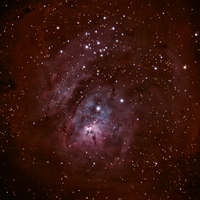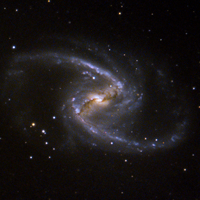A collection of astronomical photos taken by Adam Lundie at Eatons Hill Observatory.
Equipment Used:
- Telescope 1: Celestron 1100 Edge HD
- Telescope 2: Skywatcher Esprit 120ED
- Telescope 3: Skywatcher Black Diamond 80ED
- Mount: Skywatcher EQ8-Rh Pro
- Imaging Cameras: QSI 683ws-8 Monochrome, ZWO ASI290MM
- Filters: Astrodon Tru-Balance Gen 2 LRGB, Astronomik CLS-CCD, 6nm Hα, 6nm SII, 6nm OIII, ProPlanet 742nm IR-pass
- Guide Camera: Starlight Xpress Lodestar X2
- Guiding Optics: Skywatcher Evoguide 50ED, Innovations Foresight ONAG, Starlight Xpress Large Format Active Optics
- Focusers: Starlight Instruments Feather Touch + Posi Drive Motor
|
|
||
Recent Work:
31-Mar-2016
While looking through the data captured of the Sombrero Galaxy, I discovered an object slowly moving through the field of view. I have identified the object as main belt asteroid 1999 CK46, magnitude 17.4.
29-Mar-2016
The Jewel Box, Kappa Crucis Cluster, NGC 4755, is an open cluster in the constellation Crux. This cluster is one of the youngest known, with an estimated age of 14 million years. It is located 6,440 light years from Earth, and contains around 100 stars.
06-Mar-2016
It's been cloudy. Very cloudy. I managed to get a short imaging session, so I had to choose a bright target. The globular cluster Caldwell 79 was in the right place at the right time.
It is located at a distance of 16,300 light years from the Sun and has an estimated 254,000 times the mass of the Sun. This cluster is about 10.24 billion years old.
27-Feb-2016
After switching from a Celestron CGEM DX to a Skywatcher EQ8 Pro, and from off-axis guiding to on-axis guiding I am very happy with the results. This is a 25 minute test shot of the Horsehead Nebula.
13-Feb-2016
NGC 3199 is a hydrogen emission nebula, about 12,000 light-years away. The nebula is about 75 light-years across with a Wolf-Rayet star generating an intense stellar wind in the center of its ring.
22-Jan-2016
Gum 15 is a cloud of hydrogen gas 3,000 light-years from Earth. It is shaped by aggressive winds flowing from the stars within and around it.
13-Jan-2016
The cone's shape comes from a dark absorption nebula consisting of cold molecular hydrogen and dust in front of a faint emission nebula containing hydrogen ionized by the brightest star of NGC 2264. The faint nebula is approximately seven light-years long and is 2,700 light-years away from Earth.
07-Jan-2016
A simple image showing a comparison of visible spectrum and emission line filters in stacked images of the Cone Nebula.
14-Dec-2015
The unusual shape of the Red Rectangle is likely due to a thick dust torus which pinches the otherwise spherical outflow into tip-touching cone shapes. Because we view the torus edge-on, the boundary edges of the cone shapes seem to form an X. The distinct rungs suggest the outflow occurs in fits and starts.
11-Dec-2015
Often I like to see how an image is processed from start to finished. Presented in this animation are the main processing steps in sequence from my reprocessed image of the Lagoon Nebula.
08-Dec-2015
Shot over four consecutive nights, the Spanish Dancer is a spiral galaxy ~38 million light years distant in the southern sky.
04-Dec-2015
Often I like to see how an image is processed from start to finished. Presented in this animation are the main processing steps in sequence from my image of NGC 1365
03-Dec-2015
Cloudy nights and full moons gave me a chance to have another look at one of my first deep sky photographs. The first image taken through my telescope that made me say "wow". I decided to try reprocessing the original data with the skills I've learned in the past few months.
27-Nov-2015
NGC 1365 is a barred spiral galaxy 56 million light years away. Presented here is a hydrogen alpha enhanced color photograph.
